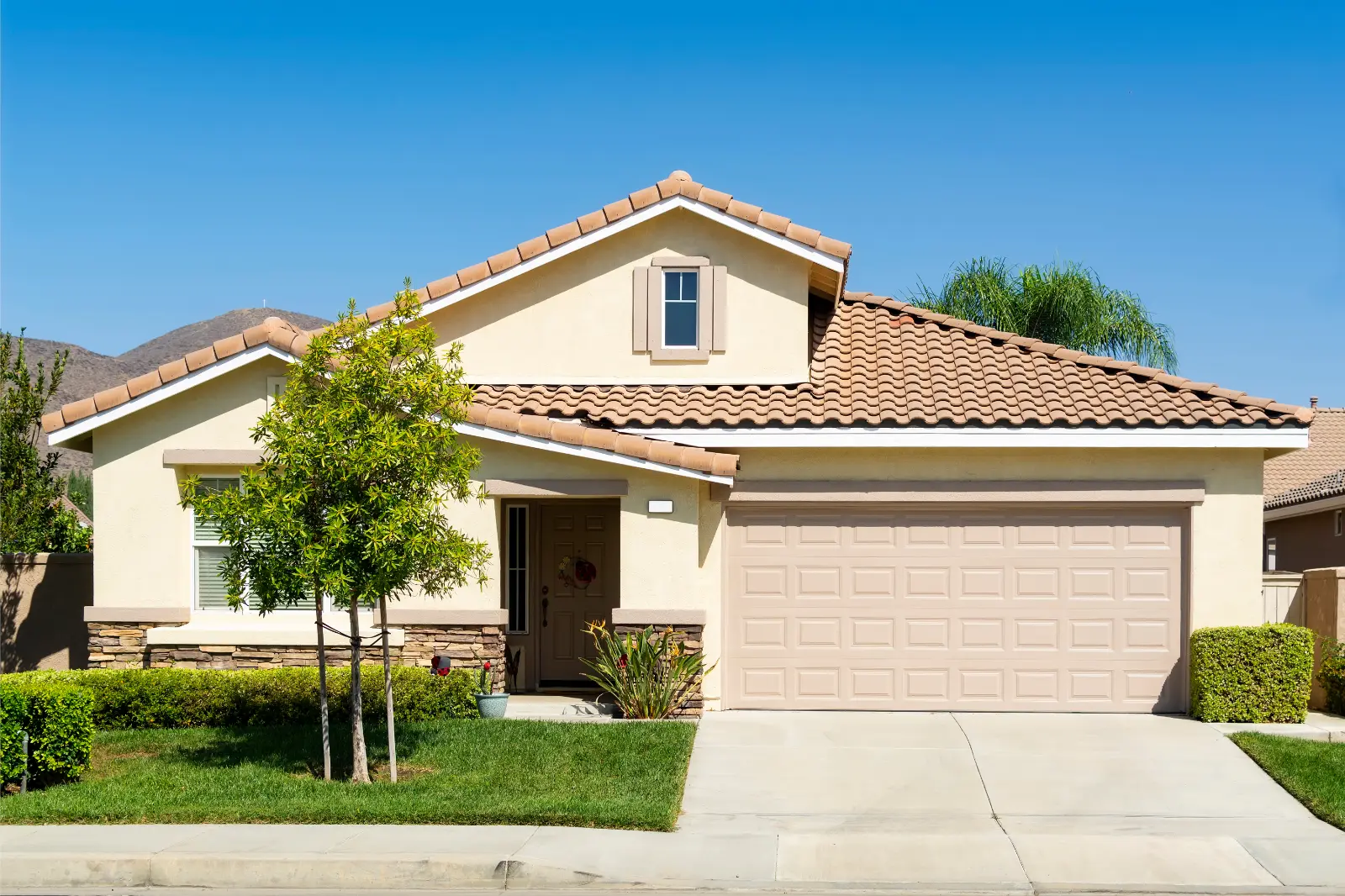
Contents
You might think that emergency garage door repair is something only professionals can handle. However, with the right knowledge and a few essential tips, you can save yourself time and money by tackling the repairs yourself.
In this discussion, we will explore four essential tips that will empower you to handle emergency garage door repairs efficiently and effectively.
So, whether you’re dealing with a broken spring or a malfunctioning opener, keep reading to discover how you can become your own garage door hero.
Key Takeaways
- Assess the emergency situation and visually inspect the garage door for damage or misalignment.
- Test the functionality and safety features of the garage door to identify common issues.
- Troubleshoot techniques for quick fixes, such as addressing a garage door that won’t open or close or strange noises coming from the door.
- Follow safety measures during garage door repair, including disconnecting power, using protective gear, and seeking professional help if unsure or uncomfortable.
Assessing the Emergency Situation
Assess the emergency situation by carefully examining the condition of your garage door. When faced with an unexpected garage door malfunction, it’s natural to feel a sense of panic. However, by taking a moment to assess the situation, you can regain a sense of control and take the necessary steps towards resolving the issue.
Begin by visually inspecting the garage door for any obvious signs of damage or misalignment. Look for broken or tangled cables, bent tracks, or loose screws and bolts. Pay close attention to the springs, as they play a crucial role in the door’s operation and can be a common source of problems.
Next, test the functionality of the garage door by attempting to open and close it. Listen for any unusual sounds, such as grinding or scraping, which could indicate a mechanical issue. Observe the door’s movement closely, checking for any jerking or hesitating motions. If the door doesn’t open or close smoothly, it may be a sign of a more significant problem.
Additionally, inspect the garage door’s safety features, such as the sensors and auto-reverse mechanism. Ensure that the photo-eye sensors are clean and properly aligned, as they’re responsible for detecting any obstructions in the door’s path. Test the auto-reverse function by placing an object in the door’s path and attempting to close it. The door should immediately reverse its movement upon contact.
Identifying Common Garage Door Issues
One common issue that you may encounter with your garage door is a malfunctioning opener. When your opener stops working, it can be frustrating and inconvenient. However, identifying the problem is the first step in finding a solution.
Here are some common garage door issues to look out for:
- Opener not responding: If your opener fails to respond when you press the remote or wall button, it could be due to a variety of reasons. The first thing to check is the power source. Ensure that the opener is plugged in and that the circuit breaker hasn’t tripped. If the power isn’t the issue, it could be a problem with the remote control, the receiver, or even the motor itself.
- Door not closing or opening completely: If your garage door only opens or closes partially, it could be a sign of a malfunctioning opener. Check the safety sensors located at the bottom of the door tracks. Make sure they’re aligned and not obstructed by any objects. If the sensors are working correctly, it could be an issue with the garage door tracks or rollers.
- Loud or strange noises: If your garage door is making loud or strange noises during operation, it could be a sign of worn-out rollers, loose hardware, or a lack of lubrication. Inspect the rollers, hinges, and tracks for any signs of damage or wear. Apply a lubricant specifically designed for garage doors to reduce friction and noise.
- Door reversing after closing: If your garage door starts to close but immediately reverses, it could indicate a problem with the opener’s safety sensors or the door’s force settings. Check that the sensors are aligned and clean. Adjust the force settings according to the manufacturer’s instructions to ensure smooth and safe operation.
Troubleshooting Techniques for Quick Fixes
To quickly address common garage door issues, try these troubleshooting techniques for easy fixes. By following these simple steps, you can save time and money by resolving minor problems on your own. Check out the table below for a visual representation of the troubleshooting techniques.
| Problem | Possible Solution |
|---|---|
| Garage door won’t open or close | Check the batteries in your remote control |
| Make sure the power source is connected and functioning | |
| Inspect the safety sensors for any obstructions or damage | |
| Lubricate the moving parts of the garage door | |
| Strange noises coming from the garage door | Tighten the nuts and bolts |
| Lubricate the hinges and rollers | |
| Replace worn-out or damaged parts | |
| Check for any debris or objects obstructing the door’s path | |
| Garage door is uneven or crooked | Inspect the cables and springs for any signs of damage |
| Adjust the tension on the cables and springs | |
| Make sure the tracks are properly aligned | |
| Check for any obstructions in the tracks | |
| Garage door is not responding to remote control | Replace the batteries in the remote control |
| Check if the remote control is programmed correctly | |
| Reset the opener if necessary | |
| Contact a professional if the issue persists |
Essential Tools for Emergency Repairs
When faced with an emergency garage door repair, having the right tools at your disposal is essential for a quick and efficient fix. You want to be prepared so that you can get your garage door up and running again as soon as possible. Here are some essential tools that you should have on hand for emergency repairs:
- Screwdriver Set: A screwdriver set is a must-have tool for any emergency repair. It allows you to easily remove and replace screws, which are often the cause of garage door problems. Make sure to have both flathead and Phillips head screwdrivers in different sizes to accommodate different screws.
- Adjustable Wrench: An adjustable wrench is another essential tool for emergency repairs. It allows you to tighten or loosen nuts and bolts, which may need adjustment during a garage door repair. With an adjustable wrench, you can quickly fix any loose or tight connections.
- Pliers: Pliers are versatile tools that can come in handy during emergency repairs. They can be used to grip and pull wires, remove nails or staples, and tighten or loosen small components. Make sure to have both needle-nose pliers and regular pliers in your toolbox.
- Hammer: A hammer is a useful tool for emergency garage door repairs. It can be used to tap or knock loose any stuck components, such as rollers or tracks. Choose a hammer with a comfortable grip and a claw on the opposite end for added versatility.
Having these essential tools readily available will ensure that you’re prepared for any emergency garage door repair. Remember to handle all repairs with caution and, if needed, seek professional help. With the right tools and knowledge, you can quickly and efficiently fix your garage door, providing a sense of belonging and security for you and your family.
Safety Measures During Garage Door Repair
Ensure your safety by taking the necessary precautions during garage door repairs. When working on your garage door, it’s important to prioritize safety to protect yourself and those around you. By following the appropriate safety measures, you can minimize the risk of accidents and ensure a smooth repair process.
Firstly, before you start any repairs, make sure to disconnect the power supply to your garage door opener. This will prevent any accidental activation of the door while you’re working on it. Additionally, it’s crucial to wear protective gear such as safety goggles and gloves to shield yourself from potential injuries. Remember, your safety should always come first.
Next, be cautious when dealing with heavy objects such as garage door panels or springs. These components can exert a significant amount of force and cause severe injuries if not handled properly. When working with springs, use the appropriate tools and techniques to avoid any sudden releases or snaps. If you’re unsure about how to handle these components, it’s best to seek professional assistance.
Furthermore, keep your work area clean and organized. Remove any clutter or obstacles that may hinder your movement or cause accidents. Make sure to secure any loose tools or equipment to prevent them from falling and causing harm.
Lastly, if you encounter any major issues or if you’re unsure about the repair process, it’s essential to call a professional garage door technician. Attempting complex repairs without proper knowledge and experience can be dangerous and may result in further damage to your garage door.
Preventive Maintenance Tips for Longevity
To ensure the longevity of your garage door, regular preventive maintenance is crucial. By following a maintenance checklist, you can identify and address any potential issues before they become major problems.
Troubleshooting common issues such as noisy operation or uneven movement can also help in maintaining the overall functionality of your garage door.
Maintenance Checklist
Are you looking to maximize the longevity of your garage door? Regular maintenance is key to keeping your garage door functioning smoothly and preventing costly repairs. Here is a maintenance checklist to help you ensure the longevity of your garage door:
- Monthly Inspection:
- Lubricate all moving parts, such as hinges, rollers, and tracks, to reduce friction and wear.
- Check for any loose bolts or screws and tighten them as necessary.
- Seasonal Maintenance:
- Inspect the weatherstripping and replace if damaged to keep out drafts and pests.
- Clean the tracks and remove any debris that may hinder the door’s movement.
Troubleshooting Common Issues
To ensure the longevity of your garage door, it’s important to be aware of common issues that may arise and troubleshoot them promptly. By addressing these issues in a timely manner, you can prevent further damage and costly repairs.
One common issue is a misaligned garage door track. If you notice that your door isn’t opening or closing smoothly, check the alignment of the tracks and make any necessary adjustments.
Another issue to watch out for is worn out or damaged rollers. If you hear excessive noise or notice your door jerking during operation, it may be due to worn out rollers. In this case, it’s recommended to replace them.
Additionally, keep an eye out for loose or broken cables, as they can cause your garage door to become unstable or inoperable.
Regularly inspecting and addressing these common issues will help ensure the longevity of your garage door and provide you with peace of mind.
Summary
When it comes to emergency garage door repair, it’s important to assess the situation, identify common issues, and use troubleshooting techniques for quick fixes.
Having essential tools on hand and following safety measures are crucial for a successful repair.
Just like a well-oiled machine, regular preventive maintenance will ensure the longevity of your garage door.
Recent Posts
What Are Budget-Friendly Garage Door Opener Installations?
Regarding garage door opener installations, understanding your options, evaluating costs, and exploring DIY possibilities can
Why Choose Affordable Garage Door Opener Installation?
When considering a garage door opener installation, you might wonder if opting for an affordable
Unlocking Hidden Issues in Garage Door Repairs
Regarding garage door repairs, overlooking hidden issues can lead to significant problems down the line.

